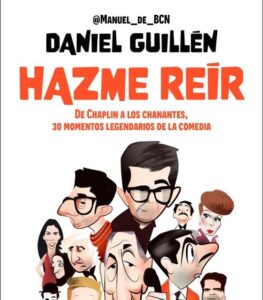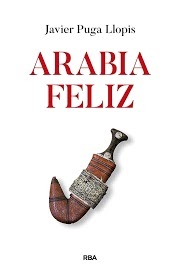About the book
NARRATOR AND STRUCTURE The novel has three different plot lines narrated in the third person omniscient. Two of them—the ones set in the 16th century—converge in a dramatic way. José Luis Gil Soto structures the novel in 95 short chapters, each of which is set in a specific time and place. These chapters alternate until the end, so that, little by little, we complete the story of the symbol that, in the end, unites the three stories: Pizarro’s necklace.
ARCO TEMPORAL Each of the three threads has its own chronology. The novel begins in 1524, with the constitution of the company that will manage the expedition to Peru, on the one hand, and the return of the Inca Huayna Capac from the war, on the other. The epic of Pizarro and his men then runs parallel to the civil war between Atahualpa and Huáscar. This thread ends with the execution of Atahualpa by the Spanish in 1533. The thread set in the present day runs from April to July 2019.
ON GENDER AND STYLE At its core, Lágrimas de Oro is an absorbing and highly engaging historical novel, as it narrates the conquest of Peru from two different points of view: that of the Spanish and that of the Incas. It is also a fast-paced thriller, centered on the theft of an immensely valuable necklace and the investigation to recover it. The author uses different language and stylistic resources depending on the period in which each chapter takes place.
FICTION, REALITY AND HISTORICAL RECREATION The novel mixes historical characters with fictional ones. Everything is perfectly documented, as the author himself points out at the end of the book in a long note in which he details the most important aspects of real history and its relationship to the novel. The historical part is notable for the spectacular setting, which ranges from the clothing, food and social customs to the recreation of battles and political intrigues.
Pizarro’s necklace. Another character
According to a professor, it may have been Francisca Pizarro, the conquistador’s eldest daughter, who gave the necklace to the Virgin long after her father’s death. It is a gold necklace with emeralds. It was displayed at the Museum of America in Madrid, on the occasion of an exhibition on the treasure of the Incas. The insurance company valued it at one million euros at the time. A Belgian appraiser who is an expert in precious stones and antiques, on the other hand, values it at around ten million euros on the black market. However, Julio Adelman knows something about the necklace that others do not. And that could raise its value to the category of incalculable.
Lágrimas de Oro takes place in a multitude of different settings, given its plot and narrative structure. Some of them, moreover, appear in the 16th century and in the present day, as is the case with Trujillo and La Zarza, for example. It is impossible to list them all, these are the main ones. The novel begins in Panama, in the governorate of Castilla del Oro. It extended from the Gulf of Urabá, in the northwest of modern Colombia, to the limits between the current Panamanian provinces of Veraguas and Colón, so that it included the coasts of what we know today as Nicaragua, Costa Rica and part of Panama.
Pizarro’s first two expeditions to the south took place along the Pacific coast, although it is not entirely clear which places the chronicles referred to. We do know of two important points with a strong symbolic charge in that epic: the island of Gallo, located in the bay of Tumaco, in Colombia, the setting for the episode of “the Thirteen of Fame”, and the island of Gorgona, or of the Sierpes, where the expeditionaries lived for two terrible months.
From the third and final expedition, which left in 1531, we can point out the episodes located in Coaque, where Pizarro settled to undertake the final campaign, and in Tumbes, where he began the conquest of the Inca empire. We know of the presence of the Spanish in that area from the message of the curaca Chilimasa to Huayna Capac: “He wishes you to know of the presence of strange beings who came by sea in large houses, and these beings are some bearded and others fused with strange beasts, and all of them covered with hard and shiny shells, which my lord orders to say that they resemble the god Viracocha, if he had to give them a similarity.”
Through the story told from the point of view of the Incas, we learn about cities that will be key in the history of the conquest of Peru. Cusco or Cuzco —depending on whether it is presented by the Incas or the Spanish— is the capital of the empire. Huayna Capac chose Quito, in the north, as a strategic place in which to concentrate his troops in the face of the rebellion of the border towns. There he provisionally established the court. Cajamarca, in addition to playing an important role in the civil war between Huáscar and Atahualpa, was the place where Pizarro captured the latter, beginning the final phase of the conquest.
The reader visits the Extremaduran towns of Trujillo and La Zarza, today Conquista de la Sierra, both in the 16th century, when it was the home of the Pizarro brothers, and today. The same is true of Seville and Toledo. In the current storyline we follow the routes of illegal trafficking of works of art and antiques in Paris, Brussels, New York or Antwerp, the diamond capital since the 16th century. In these capitals, real places – cafes, hotels, restaurants, etc. – are mixed with those that come from the author’s imagination. Julio Adelman and Rebeca Parma live in Madrid, as well as the headquarters of the Central Operative Unit of the Civil Guard.
Source: https://algunoslibrosbuenos.com/lagrimas-de-oro


